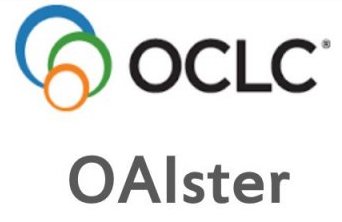Exploring the Shift from Physical to Cybercrime at the Onset of the COVID-19 Pandemic
Abstract
Keywords
Citation Metrics
Full Text:
PDF
References
Birk, D., Gajek, S., Grobert, F., & Sadeghi, A.-R. (2007). Phishing phishers-observing and tracing organized cybercrime. Second International Conference on Internet Monitoring and Protection (ICIMP 2007), 1-5 July 2007, San Jose, CA, USA. https://doi.org/10.1109/ICIMP.2007.33
Brantingham, P., & Brantingham, P. (2013). Crime pattern theory. In Environmental criminology and crime analysis (pp. 100-116). Willan. https://doi.org/10.4324/9780203118214-13
Brenner, S. W. (2006). Cybercrime jurisdiction. Crime, law and social change, 46(4-5), 189-206. https://doi.org/10.1007/s10611-007-9063-7
Cohen, L. E., & Felson, M. (1979). Social change and crime rate trends: A routine activity approach. American sociological review, 588-608. https://doi.org/10.2307/2094589
Cornish, D., & Clarke, R. (1985). Rational choice theory: Chapter.
Cyber Fraud Task Force Bulletin: Sharing News Among Our Law Enforcement and Industry Partners. (2020).
Dhamija, R., Tygar, J. D., & Hearst, M. (2006). Why phishing works. Proceedings of the SIGCHI conference on Human Factors in Computing Systems, April 22-27, 2006, Montréal, Canada. https://doi.org/10.1145/1124772.1124861
Furnell, S., Bryant, P., & Phippen, A. D. (2007). Assessing the security perceptions of personal Internet users. Computers & Security, 26(5), 410-417. https://doi.org/10.1016/j.cose.2007.03.001
Grabosky, P. (2015). Organized cybercrime and national security. In Cybercrime Risks and Responses (pp. 67-80). Springer. https://doi.org/10.1057/9781137474162_5
Groff, E. R. (2007). Simulation for theory testing and experimentation: An example using routine activity theory and street robbery. Journal of Quantitative Criminology, 23(2), 75-103. https://doi.org/10.1007/s10940-006-9021-z
Holt, T. J., & Bossler, A. M. (2008). Examining the applicability of lifestyle-routine activities theory for cybercrime victimization. Deviant Behavior, 30(1), 1-25. https://doi.org/10.1080/01639620701876577
Jansen, J., & Leukfeldt, R. (2016). Phishing and malware attacks on online banking customers in the Netherlands: A qualitative analysis of factors leading to victimization. International Journal of Cyber Criminology, 10(1), 79.
Jennings, W. G., Higgins, G. E., Tewksbury, R., Gover, A. R., & Piquero, A. R. (2010). A longitudinal assessment of the victim-offender overlap. Journal of Interpersonal Violence, 25(12), 2147-2174. https://doi.org/10.1177/0886260509354888
Jian, J., Chen, S., Luo, X., Lee, T., & Yu, X. (2020). Organized Cyber-Racketeering: Exploring the Role of Internet Technology in Organized Cybercrime Syndicates Using a Grounded Theory Approach. IEEE Transactions on Engineering Management. https://doi.org/10.1109/TEM.2020.3002784
Jones, A., & Bugge, C. (2006). Improving understanding and rigour through triangulation: an exemplar based on patient participation in interaction. Journal of advanced nursing, 55(5), 612-621. https://doi.org/10.1111/j.1365-2648.2006.03953.x
Kigerl, A. (2012). Routine activity theory and the determinants of high cybercrime countries. Social science computer review, 30(4), 470-486. https://doi.org/10.1177/0894439311422689
Kirda, E., & Kruegel, C. (2006). Protecting users against phishing attacks. The Computer Journal, 49(5), 554-561. https://doi.org/10.1093/comjnl/bxh169
Konradt, C., Schilling, A., & Werners, B. (2016). Phishing: An economic analysis of cybercrime perpetrators. Computers & Security, 58, 39-46. https://doi.org/10.1016/j.cose.2015.12.001
Lastdrager, E. E. (2014). Achieving a consensual definition of phishing based on a systematic review of the literature. Crime Science, 3(1), 9. https://doi.org/10.1186/s40163-014-0009-y
Laszka, A., Johnson, B., Schöttle, P., Grossklags, J., & Böhme, R. (2013). Managing the Weakest Link. In Computer Security-ESORICS 2013 (pp. 273-290). Springer. https://doi.org/10.1007/978-3-642-40203-6_16
Leukfeldt, E. R., & Yar, M. (2016). Applying routine activity theory to cybercrime: A theoretical and empirical analysis. Deviant Behavior, 37(3), 263-280. https://doi.org/10.1080/01639625.2015.1012409
Lusthaus, J. (2013). How organised is organised cybercrime? Global Crime, 14(1), 52-60. https://doi.org/10.1080/17440572.2012.759508
Marcum, C. D., Higgins, G. E., Freiburger, T. L., & Ricketts, M. L. (2014). Exploration of the cyberbullying victim/offender overlap by sex. American Journal of Criminal Justice, 39(3), 538-548. https://doi.org/10.1007/s12103-013-9217-3
McManus, S. (2011). Hope, fear, and the politics of affective agency. Theory & Event, 14(4). https://doi.org/10.1353/tae.2011.0060
Okoye, E. I., & Gbegi, D. (2013). Forensic accounting: A tool for fraud detection and prevention in the public sector.(A study of selected ministries in Kogi state). Okoye, EI & Gbegi, DO (2013). Forensic Accounting: A Tool for Fraud Detection and Prevention in the Public Sector.(A Study of Selected Ministries in Kogi State). International Journal of Academic Research in Business and Social Sciences, 3(3), 1-19.
Petty, R. E., & Briñol, P. (2015). Emotion and persuasion: Cognitive and meta-cognitive processes impact attitudes. Cognition and Emotion, 29(1), 1-26. https://doi.org/10.1080/02699931.2014.967183
Reyns, B. W. (2013). Online routines and identity theft victimization: Further expanding routine activity theory beyond direct-contact offenses. Journal of Research in Crime and Delinquency, 50(2), 216-238. https://doi.org/10.1177/0022427811425539
Reyns, B. W. (2015). A routine activity perspective on online victimisation. Journal of Financial Crime, 22(4), 396-411. https://doi.org/10.1108/JFC-06-2014-0030
Robinson, M. B. (1999). Lifestyles, routine activities, and residential burglary victimization. Journal of Crime and Justice, 22(1), 27-56. https://doi.org/10.1080/0735648X.1999.9721081
Sarno, D. M., Lewis, J. E., Bohil, C. J., & Neider, M. B. (2019). Which Phish Is on the Hook? Phishing Vulnerability for Older Versus Younger Adults. Human factors. https://doi.org/10.1177/0018720819855570
Shelley, L. I. (2003). Organized crime, terrorism and cybercrime. Security sector reform: Institutions, society and good governance, 303-312.
Smith, R. (2009). Understanding entrepreneurial behaviour in organized criminals. Journal of Enterprising Communities: People and Places in the Global Economy. https://doi.org/10.1108/17506200910982019
Sood, A. K., & Enbody, R. J. (2013). Crimeware-as-a-service-a survey of commoditized crimeware in the underground market. International journal of critical infrastructure protection, 6(1), 28-38. https://doi.org/10.1016/j.ijcip.2013.01.002
Tewksbury, R., & Mustaine, E. E. (2003). College students' lifestyles and self-protective behaviors: Further considerations of the guardianship concept in routine activity theory. Criminal Justice and Behavior, 30(3), 302-327. https://doi.org/10.1177/0093854803030003003
Van Wegberg, R., Tajalizadehkhoob, S., Soska, K., Akyazi, U., Ganan, C. H., Klievink, B., Christin, N., & Van Eeten, M. (2018). Plug and prey? Measuring the commoditization of cybercrime via online anonymous markets. 27th USENIX Security Symposium, 15-17 August, 2018, Baltimore, MD, USA.
Watson, M. (2005). Environmental crime in the United Kingdom. Eur. Envtl. L. Rev., 14, 186.
Wehinger, F. (2011). The Dark Net: Self-regulation dynamics of illegal online markets for identities and related services. 2011 European Intelligence and Security Informatics Conference, September 12-14, 2011, Athens, Greece. https://doi.org/10.1109/EISIC.2011.54
Weulen Kranenbarg, M., Holt, T. J., & van Gelder, J.-L. (2019). Offending and victimization in the digital age: Comparing correlates of cybercrime and traditional offending-only, victimization-only and the victimization-offending overlap. Deviant Behavior, 40(1), 40-55. https://doi.org/10.1080/01639625.2017.1411030
Yar, M. (2005). The Novelty of 'Cybercrime' An Assessment in Light of Routine Activity Theory. European Journal of Criminology, 2(4), 407-427. https://doi.org/10.1177/147737080556056
Yip, M., Shadbolt, N., Tiropanis, T., & Webber, C. (2012). The digital underground economy: A social network approach to understanding cybercrime.















 [ https://orcid.org/0000-0003-0338-7813 ]
[ https://orcid.org/0000-0003-0338-7813 ]